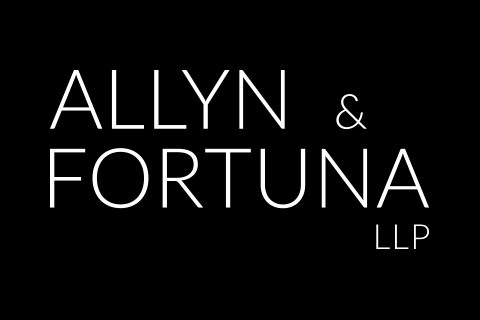Amendments to the Paycheck Protection Program Provide Further Relief to Small Business Owners
Contributed by Paula Lopez, June 10, 2020
On June 5, 2020, the Paycheck Protection Program Flexibility Act of 2020 (“Flexibity Act”) went into effect. It amends the Coronavirus Aid, Relief, and Economic Security (“CARES”) Act by modifying and clarifying several provisions of the Paycheck Protection Program (“PPP”) and Small Business Association (“SBA”) rules regarding its implementation. The PPP was passed to assist small businesses during the coronavirus pandemic by providing businesses with less than 500 employees loans from the SBA, which would be eligible for loan forgiveness if certain requirements were met as discussed in a prior posting dated April 3, 2020. The new law amends certain key provisions of the PPP and provides additional safe harbors to borrowers seeking loan forgiveness. Below is a summary of the key changes:
(1) Extends the PPP loan maturity term for the portion of the loan that is not forgiven. Under the PPP, the loan maturity term was set at two years. The Flexibility Act extends the term to a minimum of five years, maximum of ten years, from the date on which the borrower applies for forgiveness. The extended maturity period applies only to new loans made on or after June 5, 2020. However, it does leave open the possibility for lenders and borrowers to agree to modify the maturity terms of loans made before June 5, 2020.
(2) Extends the covered period for determining the amount of the loan eligible for forgiveness. Under the PPP a borrower must spend its loan proceeds within an eight-week covered period immediately following the disbursement of the loan or June 30, 2020, whichever is earlier. The Flexibility Act extends the period to 24 weeks or until Dec. 31, 2020, whichever is earlier. The extension in the covered period applies to all loans. However, borrowers on loans made before June 5, 2020 can elect to apply an eight-week covered period.
(3) Reduces the amount of the loan proceeds that must be used for payroll costs in order to qualify for loan forgiveness. Under the PPP at least 75% of the loan proceeds had to be used for payroll costs in order to be eligible for loan forgiveness. The PPP also expressly allowed for partial loan forgiveness if a borrower did not meet the 75% threshold. The Flexibility Act lowers the threshold to 60%, providing a borrower greater flexibility to use the loan proceeds for non-payroll costs and still be eligible for loan forgiveness. While the Flexibility Act does not expressly provide for partial loan forgiveness where less than 60% of the proceeds are spent on payroll costs during the covered period, a joint statement issued by the SBA Administrator and Treasury Secretary on June 8, 2020 confirmed that borrowers will be eligible for partial loan forgiveness subject to 60% of the proceeds being spent on payroll costs.
(4) Extends the safe harbor period for addressing reductions in full time employees (“FTE”) or salary/wage levels and adds a new safe harbor for reductions in FTEs that cannot be restored. In order to qualify for loan forgiveness under the PPP, borrowers were required to maintain the average full-time equivalent employees as they had prior to the pandemic and pay employees at least 75 percent of the salary or wages they received in the last fiscal quarter before applying for a PPP loan. The PPP included a safe harbor for borrowers who had a reduction in FTE and salary/wage levels between February 15th and April 26th if the levels were restored by June 30, 2020. The Flexibility Act extends the safe harbor period for restoring average FTEs and salaries/wages to Dec. 31, 2020. The Flexibility Act also includes a new safe harbor from reductions in the amount of the loan to be forgiven based on a reduction in FTEs where (a) the borrower is unable to return to the same level of operations it had prior to February 15th due to compliance with requirements or guidance issued by the Secretary of Health and Human Services, the CDC, or OSHA between March 1, 2020 and December 31, 2020 related to worker or customer safety requirements related to COVID–19; or (b) the borrower is unable to rehire the same individuals who were employed on February 15th and unable to hire similarly qualified individuals for unfilled positions by December 31, 2020. In order to qualify for the safe harbor, the borrower must document its good faith efforts to rehire FTEs and to restore business operations to pre-February 15th levels and provide documentation as part of the loan forgiveness application.
(5) Extends the payment deferral period for payments of principal, interest and fees for the portion of the loan not forgiven. The PPP permitted deferrals for no more than one year and the SBA’s guidance limited the deferral period to six months. The Flexibility Act extends the deferral period for new and existing loans to the date SBA determines the amount to be forgiven and remits payment to the lender. The Flexibility Act includes a new provision that requires a borrower who does not apply for loan forgiveness within 10 months after the end of the covered period to begin repayment of the loan at the end of the 10-month period.
(6) Removes the restriction under the PPP prohibiting any payroll tax payment deferrals on loans forgiven. The PPP prohibited borrowers whose PPP loan was forgiven from deferring payroll tax payments. However, the Flexibility Act allows all borrowers to delay payment of eligible payroll taxes to the extent permitted under the CARES Act.
It is expected that the SBA will issue guidance to assist in implementation of the new provisions. As shown above, the new amendments make key changes to the PPP designed to further assist businesses in surviving the economic challenges imposed by the pandemic.
 Allyn & Fortuna LLP
Allyn & Fortuna LLP